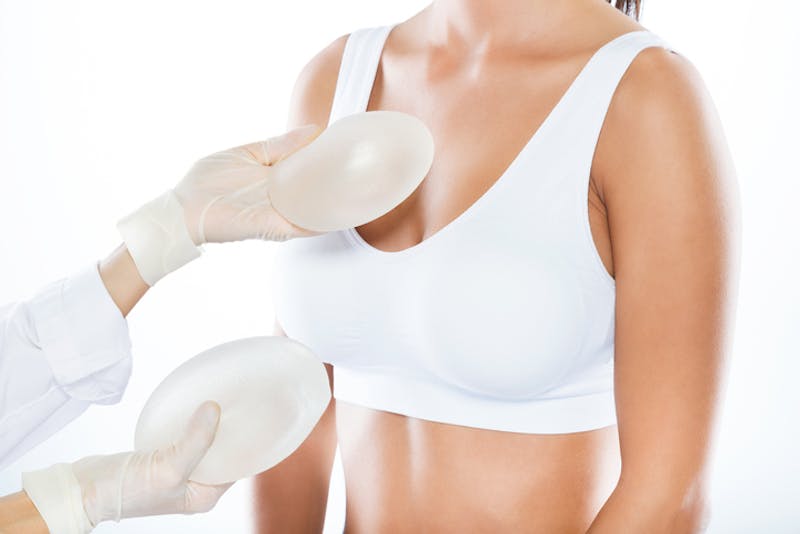

If you are interested in breast augmentation, you have a big decision to make before your plastic surgery. That is, whether you prefer silicone implants or saline implants. Both types provide the enlargement you want. They also increase the fullness of your breasts, improve self-image, and provide natural-looking results. Below, the expert in breast reconstruction at Zenn Plastic Surgery in Raleigh, North Carolina, explains the differences between these types and how to make your decision.
Silicone Implants vs. Saline Implants
According to the American Society of Plastic Surgeons (ASPS), breast augmentation is the most popular plastic surgery in the U.S. annually. In fact, in the years 2017, 2018, and 2019, an estimated 300,000 people had breast enhancement surgery in the U.S., and that does not even include people who had breast implants for their breast reconstruction surgery.
The ASPS also reported that in 2019, 95 percent of all implants used were silicone. And the use of saline implants has continued to decrease over time. Why are silicone implants so much more popular than saline implants? How do you know which ones are best suited to your breast augmentation? Both types of implants can achieve the same degree of enlargement according to your specific needs and the look you want to achieve. While the volume they create is similar, the final look can be different depending on your existing breasts and body shape. The Food and Drug Administration has approved using both saline and silicone for plastic surgery.
Silicone Implants
Silicone is a synthetic material, a hybrid of plastic polymers and rubbers. Breast implants filled with silicone use a medical grade of this material with a consistency and texture that feels like your own body fat. The implant consists of a clear case and gel, both made of silicone.
Silicone implants are available in various shapes and sizes, and the ones currently on the market are “cohesive” or solid. Some may have a firmer consistency, often called “gummy bear” implants. Your surgeon works with you to choose the right shape, size, and type to suit your goals.
You must be at least 22 years of age to receive silicone implants. That is, with some exceptions. If you are younger and undergoing breast reconstruction after mastectomy, you may be able to request silicone. But manufacturers do not honor warranties for younger patients who implant their silicone products.
Saline Implants
Saline implants have been popular for much longer than most people realize. They have been widely used for over 50 years and are available to patients aged 18 or older. These implants consist of a silicone shell inserted into the body while empty. The surgeon then fills the shell with sterile salt water. As a result of this method, the scar size needed is smaller (2 cm) than for silicone implants(4 cm).
Saline implants are sometimes more visible beneath the skin because of rippling and can feel like a “bag of water.” You may also feel the liquid moving within the implant. Some people have also said that these implants feel less natural to the touch. This is particularly the case when overfilled to prevent wrinkling or rippling.
Some saline implants contain water within several chambers to reduce the “sloshing” feeling sometimes experienced by patients. These baffled implants also minimize rippling.
During the 1990s, there was a “silicone scare,” and women thought ruptured silicone implants caused health problems. The Institute of Medicine investigated these claims and found them to be untrue, and silicone implants were placed back on the market. Women who had their silicone implants removed during the silicone scare and replaced with saline implants were much less pleased with the saline version. This was because the feel of silicone implants more closely resembles the feel of natural tissue.
Are Saline Implants or Silicone Implants Safer?
Both types of implants are considered safe if you undergo surgery by a board-certified plastic surgeon. Some people will always prefer saline due to the silicone scare in the 90s (more than 20 years ago.) If saline implants rupture, the fluid in these implants can safely reabsorb into the body. You also know that if an implant ruptures, the breast size will shrink over days or weeks. The rate of saline implant rupture is 1-2% per year.
However, this is not the case with silicone implants. In fact, the newer cohesive implants are solid, so the silicone gel does not go anywhere if the outer shell is ruptured. And most women cannot even tell if there is a rupture and may choose to leave the implant alone, even if it is.
Both implants are believed to be equally safe. Saline implants, however, require replacement if ruptured due to the deflated change in size that will be noticeable.
What do I do if an Implant Ruptures?
Both implant types can rupture inside the body or cause unexpected complications. If you believe your implant has ruptured, you should consult your plastic surgeon. Ruptured saline implants will leave the breast feeling deflated and looking flatter. But the sterile fluid that fills one of these implants can easily reabsorb into the body. This process can happen over days or weeks.
When a silicone implant ruptures, you may not immediately realize anything has happened. For older silicone implants, silicone can become trapped within the scar tissue capsule, forming a pocket around the implant after surgery. Otherwise, you may sense the breast is harder or has changed size. There can also be breast pain, shape changes, or health complications. For older implants that are not cohesive, surgery for rupture includes removing all silicone gel material and the surrounding scar tissue.
There is no emergency for a rupture of either type of implant, and breast implant revision surgery can be scheduled electively. During this procedure, you can receive a new implant that should last another eight to 20 years.
Cost Comparison for Saline vs. Silicone
Insurance typically does not cover breast implant surgery, except for breast reconstruction after mastectomy. When considering getting implants as part of breast augmentation, think about the long-term costs of doing so. Breast augmentation is not a one-time procedure. Instead, you will most likely need to replace your implants due to either implant problems or just the natural aging of the breasts around the implants. The industry average for replacement is every eight to 20 years.
While silicone implants are more expensive, 2 to 3 times more than saline, they have a more natural feel and are less likely to need replacement.
Your Plastic Surgeon Will Help You Decide
Understanding the differences between implants made of silicone and saline is very helpful in making your breast augmentation selection. The cost comparison also makes a difference for some people. But as you can see from the above statistics, most people choose silicone. Eighty-eight percent do so because this material offers broader appeal regarding consistency, texture, and appearance.
Talk to our board-certified plastic surgeon about your options. He will provide implants for you to hold, feel, and insert into your bra under your clothing. Doing so will help you understand which type, size, and shape suits you best.
You should also ask your plastic surgeon for before and after photos of prior patients. You can learn a great deal about how you will look after your breast augmentation or breast reconstruction surgery by seeing the work your plastic surgeon has performed in the past. In the “before” images, look for someone who has a similar size, shape, and body type as your own. Then review their “after” image to picture yourself after surgery.
Dr. Michael Zenn of Zenn Plastic Surgery in Raleigh, NC, is an internationally renowned plastic surgeon. He performs hundreds of breast augmentation surgeries each year. He also developed the Zenn Delay method of breast reconstruction to provide more beautiful results after mastectomy. Schedule your consultation and learn whether silicone implants or saline implants are right for you by calling (919) 480-3885 today.

